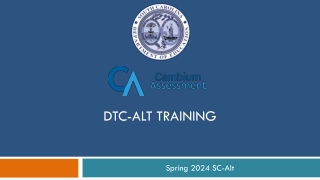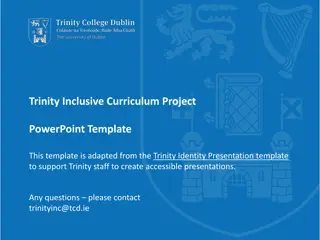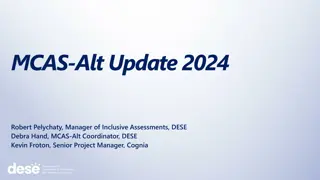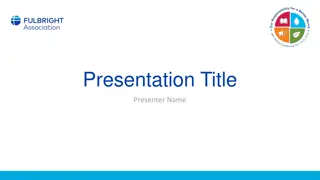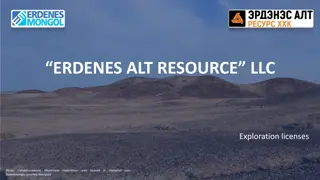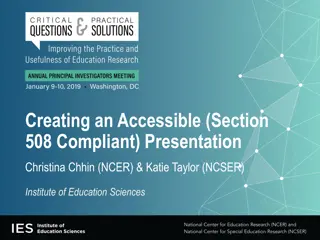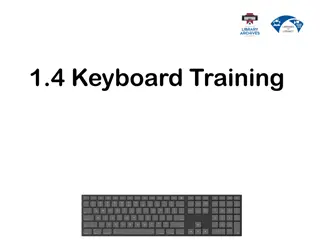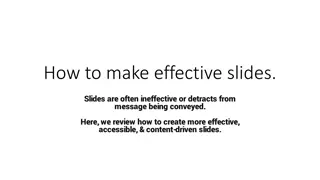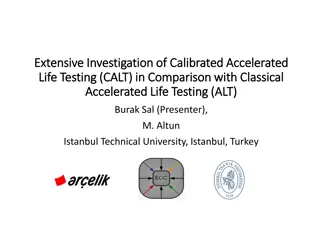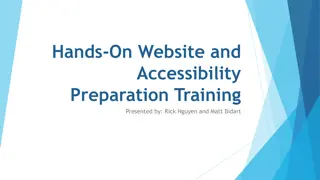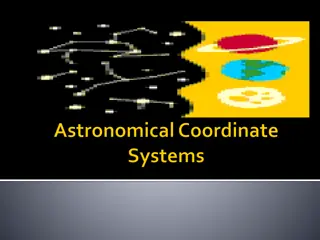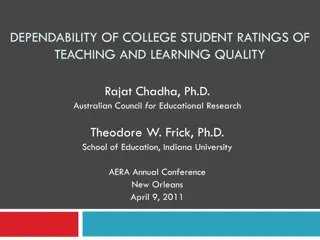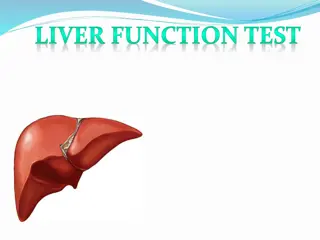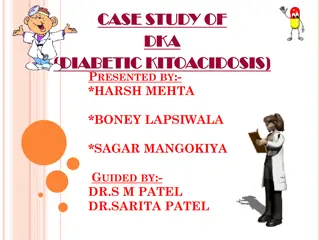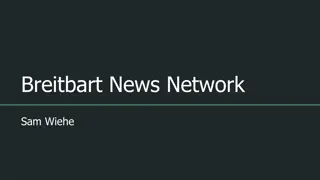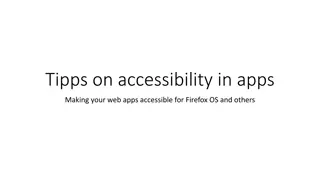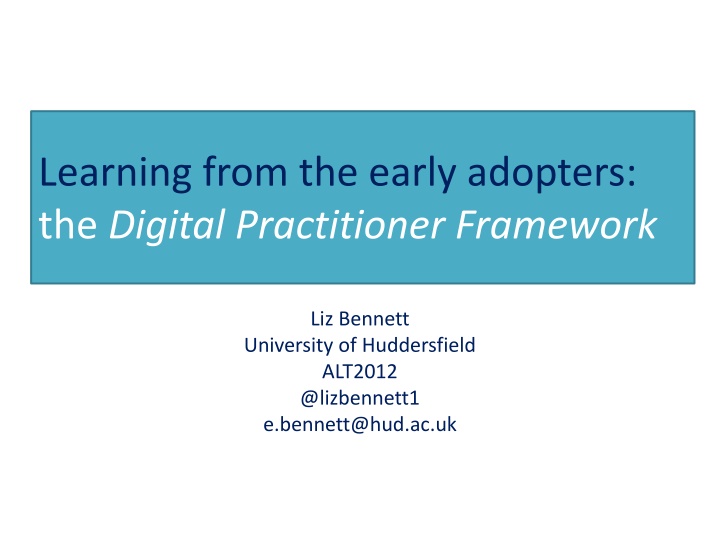
Digital Practitioner Framework: Insights on Web 2.0 Pedagogies
Explore the Digital Practitioner Framework, Web 2.0 pedagogies, and the evolution of digital learning. Discover the common features, problem spaces, and dimensions influencing the digital practitioner's journey.
Download Presentation

Please find below an Image/Link to download the presentation.
The content on the website is provided AS IS for your information and personal use only. It may not be sold, licensed, or shared on other websites without obtaining consent from the author. If you encounter any issues during the download, it is possible that the publisher has removed the file from their server.
You are allowed to download the files provided on this website for personal or commercial use, subject to the condition that they are used lawfully. All files are the property of their respective owners.
The content on the website is provided AS IS for your information and personal use only. It may not be sold, licensed, or shared on other websites without obtaining consent from the author.
E N D
Presentation Transcript
Learning from the early adopters: the Digital Practitioner Framework Liz Bennett University of Huddersfield ALT2012 @lizbennett1 e.bennett@hud.ac.uk
Structure Outline of my research Digital Practitioner Framework Context So what? methodology
Web 2.0 = collaborative and participatory Weller (2007) http://nogoodreason.typepad.co.uk/no_good_reason/2007/12/my-personal-wor.html
Crooks 4 features of web 2 Scaling up participation, where quality of the service is improved with greater number of participants; Sharing and joint knowledge building functions, i.e. user collaboration; Using a range of formats, not just text e.g. video and picture and audio; Rich and democratic forms of participation means there are novel frameworks for research and inquiry (2008, p.9).
Pedagogies of web 2.0 Emergent learning (Williams et al., 2011) Connectivism (Siemens, 2004, Downes, 2006) Participatory Learning (Davidson and Goldberg 2009) Rhizomatic learning (Cormier, 2008) Learning 2.0 (Downes, 2005) Networked Learning (Goodyear et al. 2004) Ubiquitous Learning (Cope and Kalantzis 2008) Communities of Inquiry (Wenger 1998, Garrison and Anderson 2003) Abundant learning Weller (2011)
Common features Student led agency Student activity Knowledge creation Use of networks Learning with and through conversations
Problem space Rhetoric of pedagogies over hyped? Literature infused with negativity Anecdotal examples Theorising space between Focusing on tutors
Range of dimensions to the study Tools in use Pedagogy and how it is understood Emotional journey Identity management Understanding and modelling the digital practitioner Understanding the digital practitioner s development Institutional context is part of the story too.
Structure Outline of my research Digital Practitioner Framework Context So what? methodology
The early adopters http://glam.co.uk/2011/04/2011s-top-ten-family-destinations/go-ape/
Early adopters from Rogers 1983 http://paulgstacey.files.wordpress.com/2010/09/techadoptionlifecycle2.jpg?w=420h=174
Not the laggards or technophobes Youtube Ipad
A comment on methodology Learning from the voices of practitioners; shed light on the interactions between professional identity and agency and how this impacts on their professional practices in times of change (Jephcote and Salisbury, 2009, p.967)
Methodology Phenomenological Small scale (n=16) lecturers Across the university post 1992 Semi structured interviews Thematic analysis
Structure Outline of my research DPF Context So what? methodology
Digital Practitioner Framework (part of) Digital practitioner from Ecclesfield et al 2012 attributes practices skills Based on Sharpe and Beetham (2010) s Digital Literacies Framework access
Digital Practitioner Framework movement up attributes practices skills access
Digital Practitioner Framework movement down attributes practices skills access
Digital Practitioner Framework I am confident in my attitude to TEL; willing to experiment with technology and how it can be used in teaching and learning; able to balance risks of change with its potential; convinced by the radical potential of technology to enhance and transform learning; willing to invest time in exploring and evaluating TEL. I designlearning activities to suit my students needs using TEL as appropriate. I facilitate learning using appropriate technological tools. I explore the capabilities of technology. I behave ethically in contexts where the digital media is blurring boundaries. I evaluate my practices. I reflect on innovations in my practice. I experiment with tools in my practice. attributes practices skills I can: use the appropriate privacy settings for my needs; evaluate the affordances of TEL tools to suit my needs; manage the blurring of boundaries between private and work time. access I have access to: networked devices and applications. media devices. people who can support me in using technology. a network of people with ideas for using technology.
Outline of my research Digital Practitioner Framework So Context what? methodology
Problem space Rhetoric of pedagogies over hyped? Literature infused with negativity Anecdotal examples Theorising space between Focusing on tutors Focussing on early adopters Their lived experience
Some conclusions and implications for practice? Digital Practitioner Framework Moving up less in evidence than movement down the pyramid ie attitudes drive adoption Amplification could be used to support staff development/CPD attributes practices skills access
Learning from the early adopters: the Digital Practitioner Framework Liz Bennett University of Huddersfield ALT2012 @lizbennett1 e.bennett@hud.ac.uk
References Cope, B., & Kalantzis, M. (2008). Ubiquitous Learning: An Agenda for Educational Transformation. Paper presented at the Proceedings of the 6th Networked Learning, Greece. Cormier, D. (2008). Rhizomatic Education: Community as Curriculum. Innovate: Journal of Online Education, 4(5). Crook, C. (2008). Web 2.0 technologies for learning: The current landscape opportunities, challenges and tensions: Becta. Davidson, C., & Goldberg, T. (2009). The Future of Learning Institutions in a Digital Age. Massachusetts: MIT Press. Downes, S. (2005). E-Learning 2.0. Elearning Magazine Retrieved 24 March 2012, from http://elearnmag.acm.org/featured.cfm?aid=1104968 Downes, S. (2006). Learning Networks and Connective Knowledge. AECT Instructional Technology Forum. Retrieved from http://it.coe.uga.edu/itforum/paper92/paper92.html Ecclesfield, N., Rebbeck, G., & Garnett, F. (2012). The Case of the Curious and the Confident - The Untold Story Of Changing Teacher Attitudes To E-Learning And "Technology IN Action" In The FE Sector. Compass: The Journal of Learning and Teaching at the University of Greenwich, 5. Goodyear, P., Banks, S., Hodgson, V., & McConnell, D. (2004). Research on network learning:an overview. In P. Goodyear, S. Banks, V. Hodgson & D. McConnell (Eds.), Advances in research on networked learning. Dordrecht: Kluwer Academic Publishers. Rogers, E. M. (1983). Diffusion of Innovation (3rd ed.). London: Free Press. Sharpe, R., & Beetham, H. (2010). Understanding students uses of technology for learning: towards creative appropriation. In R. Sharpe, H. Beetham & S. de Freitas (Eds.), Rethinking learning for the digital age: how learners shape their experiences (pp. 85 - 99). London and New York: Routledge Falmer. Siemens, G. (2004). Connectivism: a learning theory for the digital age. elearning space. Retrieved from http://www.elearnspace.org/Articles/connectivism.htm Weller, M. (2011). The Digital Scholar. London: Bloomsbury Academic. Wenger, E. (1998). Communities of practice: learning, meaning, and identity. Cambridge: Cambridge University Press. Williams, R., Karousou, R., & Mackness, J. (2011). Emergent Learning and Learning Ecologies in Web 2.0. International Review of Research in Open and Distance Learning 12(3), 1-21.


